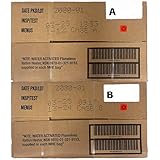Hey there! Today, I want to dive into a topic that’s super close to my heart—community resilience. It’s a term that gets thrown around a lot these days, but understanding it is crucial, especially if we want our neighborhoods to thrive through challenges. I firmly believe that having a solid plan for community resilience isn’t just essential; it’s a lifesaver. So, let’s break this down into five key areas that highlight why planning for resilience is a must.
Understanding Community Resilience
Defining Resilience
First off, let’s define what community resilience even means. Simply put, it’s the ability of a community to withstand and recover from adversities—like natural disasters, economic downturns, or health crises. This isn’t just about reacting to challenges; it’s about being proactive and prepared. Think of it like building a strong house before a storm hits.
In my experience, a resilient community doesn’t just bounce back. It learns and grows from adversity, turning challenges into opportunities for improvement. That mindset shift is what helps a community not just survive, but thrive. When we cultivate resilience, we’re building a safety net that protects the most vulnerable among us.
Ultimately, resilience is about adaptability and cooperation. It’s about communities coming together, pooling resources, and sharing knowledge to overcome obstacles. So, yes, resilience is a crucial ingredient in our community’s survival kit and far beyond that—it’s a pathway to a more vibrant community.
Creating a Comprehensive Plan
Identifying Vulnerabilities
The first step in planning for resilience is to identify the specific vulnerabilities in your community. I mean, every community has its strengths and weaknesses, and knowing what those are can make all the difference. You might find that certain areas are prone to flooding, while others might be at risk during heatwaves.
I recommend reaching out to community members and gathering local insights. Engaging in conversations can provide a wealth of knowledge—things that data alone might miss. Once you identify these vulnerabilities, it becomes easier to craft an effective resilience plan tailored to your community’s unique needs.
Keep in mind that vulnerabilities aren’t just about physical threats. Economic factors, health disparities, and social inequalities can also wear down resilience. So, looking at the big picture is essential—every piece of the puzzle counts!
Building Strong Networks
Engagement and Collaboration
Here’s where the magic happens: building strong networks. A community’s resilience often boils down to how well its members connect and collaborate. Trust me, when people work together, they can accomplish phenomenal things! It’s all about enhancing communication and fostering relationships across various groups.
== > What if ... Get a FREE Subscription to PREPARE
I’ve witnessed firsthand how engaging with local organizations, schools, and businesses can create a support system that’s ready to mobilize in times of need. Hosting community meetings or workshops can enhance those connections, allowing for collective brainstorming and sharing of resources.
Furthermore, these networks can help distribute information effectively, ensuring everyone knows what to do when a crisis occurs. It’s like creating a friendly neighborhood watch—only it’s for all kinds of emergencies! The key is to keep that network strong and active, even during calmer times.
Implementing Actionable Strategies
Developing Response Protocols
Okay, let’s get down to brass tacks: actionable strategies. Once you’ve got a plan laid out, you need to decide how to put it into effect. This is where developing clear response protocols comes into play. In the heat of the moment, chaos can ensue if no one knows the game plan.
Get Preparedness and Self-Reliance Tips. Subscribe Now!
I think it’s vital to promote regular drills and training sessions so that community members are familiar with what to do during crises. Whether it’s a fire drill, an evacuation plan, or resource distribution during an emergency, practice makes perfect! Plus, it builds confidence among residents.
A great strategy includes creating checklists and maintaining community resources in an easily accessible location. If everyone knows where to find information and assistance, it significantly increases the chances of a swift and organized response.
Evaluating and Adapting Over Time
Continuous Improvement
Finally, I can’t stress enough how important it is to continuously evaluate and adapt your resilience plan over time. You know, nothing remains static in this world—what works well today might not suffice tomorrow. So, regular assessment and feedback from the community are key.
This process doesn’t have to be complicated. Gather data after events, conduct surveys, and seek input from long-time residents. This information helps determine what strategies were effective and which ones fell short, allowing you to adapt not only to new challenges but also to changing community dynamics.
And let’s be honest, adapting over time isn’t just about survival. It’s an opportunity to innovate and improve the quality of life in your community. It’s about resilience in action, and that’s something we can all strive for together!
FAQs
1. What does community resilience mean?
Community resilience refers to a community’s ability to withstand and recover from adversities such as natural disasters, economic shocks, or public health emergencies. It emphasizes preparedness, adaptability, and cooperation among community members.
2. Why is identifying vulnerabilities important?
Identifying vulnerabilities is crucial because it helps communities understand their specific risks. This understanding allows for tailored resilience planning, ensuring that resources and strategies effectively address local challenges.
3. How can we foster strong networks in the community?
Fostering strong networks can be done through community engagement, collaboration, and building relationships among local organizations, schools, and businesses. Regular meetings and active participation create a supportive network ready to mobilize during crises.
4. What are some effective strategies for community preparedness?
Effective strategies include developing clear response protocols, conducting regular drills, and ensuring accessibility of resources. Creating information checklists and maintaining open lines of communication within the community also enhances preparedness.
5. Why should we evaluate our plans annually?
Evaluating community resilience plans annually is vital because it enables adaptation to new challenges and changing community needs. Feedback and data from community events help improve strategies, ensuring they remain effective over time.






